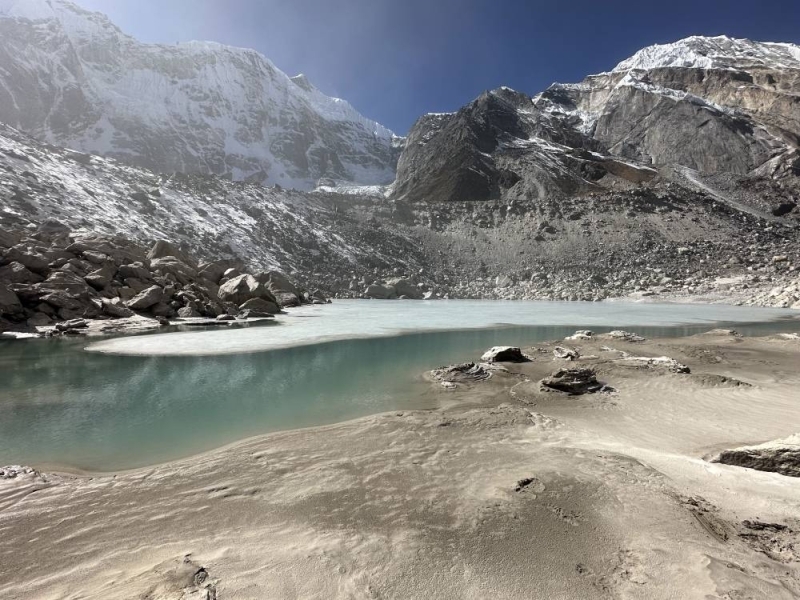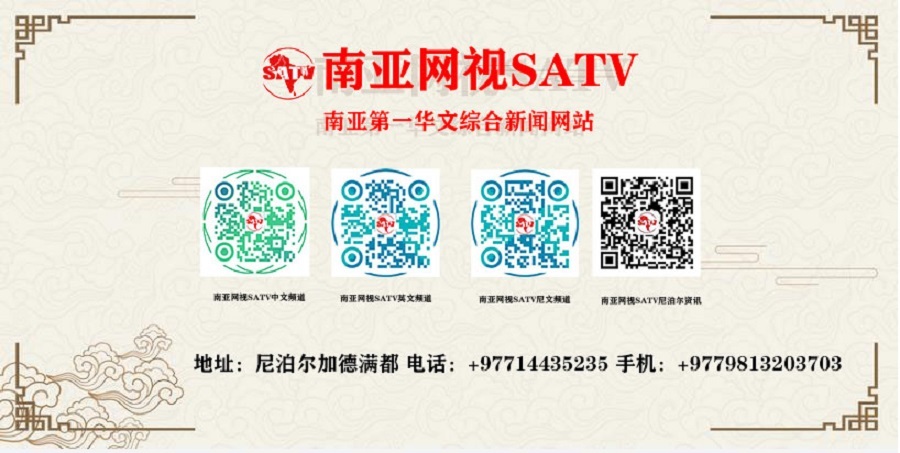
SATV April 3, Kathmandu: In the wake of melting glaciers and the groundwater crisis in Tarai, experts in the water and mountain sectors have expressed deep concerns about potential solutions and mitigation measures.
Various prominent organisations in Nepal recently celebrated Nepal National Glaciers, Water, and Weather Week (NNGWWW), an annual national-level event uniting stakeholders in Nepal's water sector.
The event commemorated World Glacier Day (March 21), which was observed to raise awareness about the effects of climate change on glaciers and to advocate for stronger policies and actions to protect these vital resources, as well as World Water Day (March 22), which emphasises the importance of freshwater resources and the challenges of water scarcity, pollution, and climate change-induced water crises.
While high levels of political representation, including energy and environment ministers, expressed a commitment to addressing water issues, experts have emphasised the importance of taking immediate action to address the sector's current issues.
According to experts, 2025 has been marked as the International Year of Glacier Preservation, emphasising the critical need to protect the world's glaciers, which are melting at an alarming rate due to climate change. Glaciers are a critical source of freshwater for millions of people, and their loss poses severe environmental and socio-economic consequences.
Glaciers in Nepal are retreating at an alarming rate. According to the ICIMOD, glaciers in the Hindu Kush Himalaya melted 65 per cent faster from 2011 to 2020 than the previous decade. According to an ICIMOD report, Nepal's glacier area decreased by approximately 25 per cent between 1980 and 2010.
While the glaciers melting Madhes Province, which falls entirely in the Tarai belt, is facing a severe groundwater crisis, a situation that could worsen with the rapidly growing population in the region. The local population heavily depends on groundwater for drinking, cooking, household needs and irrigation.
However, the water table has been steadily declining over the decades due to unsustainable groundwater extraction, preventing natural recharge. In addition to over-extraction, the crisis is largely driven by deforestation and land degradation in the fragile Chure Hills.
Recently, a symposium on the sustainable management of groundwater resources in Nepal, held in Janakpur, called for a coordinated approach to protect the Chure and develop indigenous, sustainable solutions to the water crisis.
Geeta Pandey, director of policy planning and research at KIRDARC, said, "Glaciers in Nepal are the backbone of our mountain communities, acting as natural reservoirs that store water during the cold months and gradually release it for drinking, agriculture, and hydropower generation. However, climate change is accelerating glacier melt, leading to reduced water storage and unpredictable water flows. This not only results in water shortages during critical periods but also increases the risk of sudden floods due to glacial lake outburst events."
She further said that as a CSO working in Nepal, her team emphasises a community-based approach to address these challenges. "We advocate for engaging local communities in sustainable practices, such as rainwater harvesting and establishing community-led early warning systems. By working closely with local leaders and organisations, we strive to ensure that policies reflect the real needs of those who depend on glacier-fed water," said Pandey.
"Inclusive, locally driven commitment is essential for building a resilient water management system that can adapt to the changing climate and safeguard our precious water resources for future generations."
Another water expert, Seema Rajouria, head of policy, advocacy, and campaigns at WaterAid Nepal, explained that when glaciers melt, the water that flows downstream has a significant impact on communities. "In the short term, it will have a positive impact due to an increase in water that will impact agriculture, energy, as well as drinking water due to an influx. The negative side of it will be floods causing destruction. In the long term, the impact will be negative as water flow will decline creating droughts, landslides and water scarcity, impacting the lives of communities in multiple ways," she said.
When asked about potential solutions, she said, "The solution is a combination of adaptation and mitigation measures such as rainwater harvesting, groundwater recharge, and efficient household water use such as waste water recycling. Strong early warning systems should be in place to predict GLOFs."
She also added, "Besides mitigation and adaptation policies, the government has to develop an integrated water resource management (IWRM) plan that will consider the needs of people, the economy, and the environment in a holistic manner. These are a few suggestions, but a lot can be done through collaboration and coordination between sectors."
#Glaciers are melting












